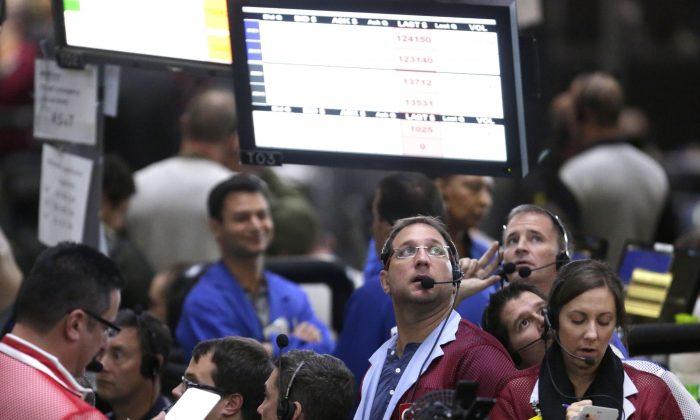Bond volatility has jumped and yields have fallen as the American banking crisis cast doubts on whether the Federal Reserve will continue with its policy of rate hikes.
On March 10, Santa Clara-based Silicon Valley Bank (SVB) failed, which is the second-biggest bank failure in American history. Two days later, on March 12, U.S. regulators announced they were intervening to shut down Signature Bank, the third-biggest bank failure. The collapse of the two banks shook investor confidence. The ICE BofAML MOVE Index, which measures volatility of the government bond market, has hit its highest level since November 2008.
Meanwhile, bond yields have dipped. The benchmark 10-year U.S. Treasury yield declined from 4.08 percent on March 2 to 3.51 percent on March 15. The two-year yield fell from 5.05 percent on March 8 to 3.93 percent on March 15.
Since March 2022, the benchmark federal funds rate has been raised by 450 basis points. Prior to SVB’s collapse, Fed Chairman Jerome Powell had indicated that the central bank would go ahead with rate hikes if inflation continues to remain elevated.
However, with doubts cast over the American banking system, fewer investors now expect the Fed to raise rates.
Fed Rate Hikes
The current benchmark interest rate is in a range of 4.50–4.75 percent. According to data from CME FedWatch Tool, the odds of the Fed approving a 50 basis-point hike, to a range of 5.0–5.25 percent slipped from 68.3 percent on March 9 to zero percent as of the afternoon of March 16.Meanwhile, odds of the Fed approving a smaller 25 percent hike rose from 31.7 percent to 84.9 percent during this period. The odds of the Fed not raising rates jumped from zero percent to 15.1 percent.
The collapse of SVB and Signature has forced traders to bet on the Federal Reserve slowing down or even pausing its rate hikes to avoid worsening the stress facing the banking sector. Meanwhile, investors have piled up their funds in Treasurys as a safety measure, causing the yields to crash.
Injecting Liquidity, China Threat
The Federal Reserve has announced an emergency lending program to bolster stressed banks amid the banking crisis. The Bank Term Funding Program, as it is called, seeks to ensure that banks have access to enough cash to meet demand from depositors.Analysts at JP Morgan Chase calculate that the program could inject up to $2 trillion into the U.S. banking system.
Some experts worry the large infusion of funds could act as a new inflationary pressure. This can put the Fed in a tight spot as the central bank had initiated the rate hike last year to bring down rampant inflation.
Rubio asked the Committee on Foreign Investment in the United States (CFIUS) to carefully review transactions to assess potential risks to national security.
“Beijing rarely allows an opportunity to exploit a crisis to pass by, so CFIUS must work diligently to ensure that promising American firms working in critical technologies do not end up acquired by Chinese conglomerates and others,” the letter said.





